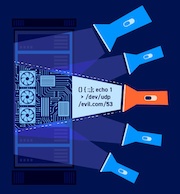DAST
Support scope for Kubernetes instances
-
Last updated: December 16, 2025
-
Read time: 1 Minute
This page lists what we are able to support when deploying to Kubernetes.
PortSwigger Kubernetes support scope
The following is within our support scope for Kubernetes instances:
- Installation and uninstallation of the Burp Suite DAST application and its components using the supplied Helm chart to a cluster meeting the documented prerequisites, as listed on the Set up a suitable Kubernetes cluster page.
- Using the Helm chart (when unmodified) and values file.
- Providing guidance on how best to use the parameters contained within the Helm chart, values file, and reference infrastructure template.
- Supporting the application running state post-deployment.
Not supported
We are unable to support the following:
- Customization of the Helm chart (except for the values file).
- Customization of any reference infrastructure templates.
Kubernetes customer responsibilities
When deploying and running Burp Suite DAST on Kubernetes, it is your responsibility to do the following:
- Make sure that your Kubernetes infrastructure meets the prerequisites, as listed on the Set up a suitable Kubernetes cluster page.
- Make sure that your cluster is appropriately sized.
- Customize the values file according to your organization's requirements.
- Customize the Helm chart, if required.
- Customize the CloudFormation reference infrastructure template, if required.
- Manage resource requests and limits.
Next step - Configuring your environment network and firewall settings


